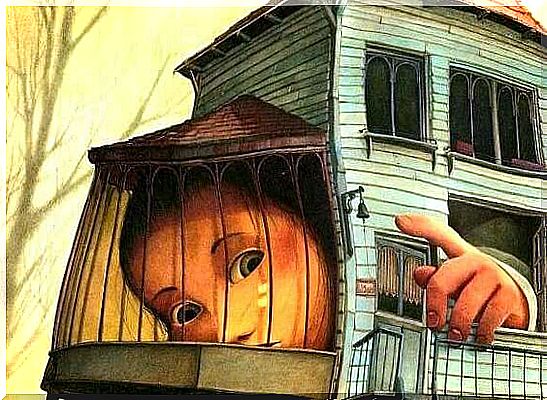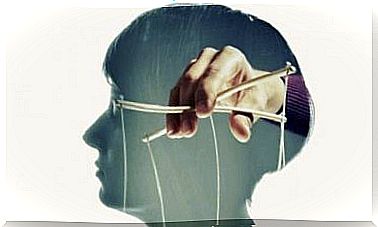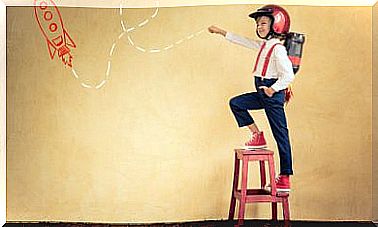The Best Rewards For Children Are Recognition And Affection

Raising a child is anything but easy. It is a journey full of challenges, discoveries, rewards and punishments. You may not be a mother or father yourself (yet), but you have probably had the opportunity to spend some time with someone else’s children. How clever are children, by wanting to discover everything with you! They haven’t even been to university for a day, nor have they any business experience, yet they are often very clear about what they want and are able to join forces to achieve this goal. They are simple, yet very effective.
They follow a dizzying learning path where they never stop experimenting. They fall, but then just get up again. They try one way, and if this doesn’t work, they just try another. During these voyages of discovery, they often display behavior that needs to be corrected, which is why there is a great deal of intelligence and finesse involved in raising a child. After a long day at work and completing other obligations, you will definitely not be able to get any energy from anywhere. And so you have no other option but to do it as smartly as possible.
Teaching children by handing out punishment
Punishment is part of the traditional way of parenting, and there are many different ways to punish a child. The most direct and, until recently, socially accepted ways include hitting children, patting them, or grabbing the old trusty belt. The purpose of this was to ensure that children would remember their wrong behavior and would subsequently associate it with the pain they had to endure as a result of this behaviour.

Another way to punish children is to take away their privileges. Things they love, whether it’s watching TV, going to the park, their favorite food or one of their favorite toys.
While there are plenty of other ways to punish a child, lastly we’ll just talk about the option of punishing a child by making him do something he doesn’t like, such as cleaning up his room, doing extra homework, or spend more time on an activity he would normally prefer to avoid.
We started this article by saying that raising a child is not easy. And punishing children in the right way and at the right time entails much more than giving children a quick slap. Proper punishment is introduced as the consequence of a particular act, is proportionate to the misstep, is applied directly and consistently by those responsible for the child, and is effective compensation for any harm that may have been done.
Yet punishment poses two major problems. The first problem is that the authority person must demand the punishment and ensure that the punishment is carried out. That is, children can do things they should be punished for without their parents finding out. As a result, they end up not being punished and they learn to act secretly and maintain the punishable behavior.
The second problem is that children don’t really learn much from punishment. By punishing a child, you emphasize something that you think is bad, but you don’t give an example of what you think is good behavior, which allows the child to replace his bad behavior with even worse behavior. For example, imagine that you punish a child for insulting someone to get attention. The child is punished, but what if in the future he chooses to hit someone to get attention instead of just insulting, then of course you have achieved nothing with your punishment.
Teaching children by giving rewards
What can rewards and recognition bring? Joy! A truly beautiful emotion. For that reason alone, we should teach our children by rewarding and recognizing them. Not long ago, I read an article that talked about the power of a green pen. This article denounced something that teachers around the world do systematically, but it can also be applied to parenting, even though parents are not tasked with marking homework. The article was about how teachers misuse their red pen (to indicate corrections) and use their green pen far too little (to indicate what has been done well).
When a teacher uses a green pen, it means that the child has done something right. The green pen therefore stands for recognition, encouragement and motivation, to ensure that the child continues in the same way. How hard would it be to correct behavior with a green pen?
The green pen has magical powers over the mind of the person using it to teach. The world is full of parents who place way too much emphasis on their children’s failures, and who make no effort to praise their children, taking good behavior as normal and for granted. They don’t realize that when they make good behavior extraordinary through their approval, it ultimately causes their children to try harder to show this behavior as often as possible.
Often it is even the case that we correct our children because they are bothering us. Don’t make so much noise, don’t slurp, don’t jump on the bed, make sure you don’t get dirty otherwise I’ll have to wash your clothes again later. Whatever it is, the underlying message is clear: child, don’t bother me. By placing so much emphasis on rest, we sometimes even tend to punish our children when they are overly happy.

However, when the child is obediently reading, quietly playing with clay, or quietly watching TV, we say nothing at all. The way we let children know that we approve of their behavior is by not correcting them. Sad, isn’t it?
We’re not saying that every time your child shows good behavior you should buy him a toy or let him play at the park for five more minutes, we’re talking about giving the best price a child can receive: being told by his parents that he has done something right, that his parents come over to give him a hug, or that they read or play with him for a while. Is there a better gift for children than that?









